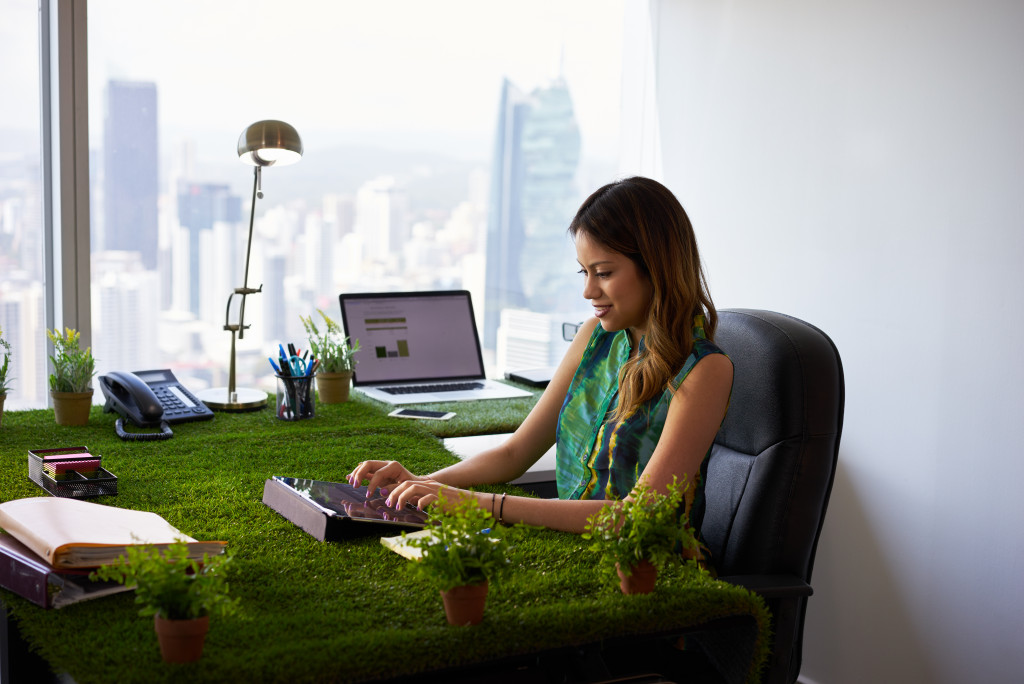No one ever said that setting up and running an eco-friendly business was easy, but there are ways to make the process easier. When finding and creating a sustainable office space, many business owners make common mistakes you can easily avoid. By learning about these mistakes and taking steps to avoid them, you’ll be well on your way to running a successful business.
1. Budgeting for the wrong things
Many entrepreneurs budget for the wrong things when creating a sustainable office space. For example, they may focus on buying energy-efficient appliances and neglect to consider other essential factors such as insulation and ventilation. While energy efficiency is crucial, it’s not the only thing you should be budgeting for. Make sure to consider all aspects of sustainability when drawing up your budget.
You can use an online calculator to compare the costs of different sustainable features for your office space. Some businesses look for government incentives to help offset the cost of eco-friendly upgrades. Others work with a green building consultant to find the most cost-effective way to make their office space sustainable.

2. Not doing enough research
Another mistake businesses make is not doing enough research when planning their sustainable office space. For example, they may choose a location without considering the surrounding area’s resources and infrastructure. It’s important to research a place thoroughly before settling on a site for your business. Consider water and electricity availability, transportation options, and waste disposal facilities.
Some businesses hire contractors without researching their environmental policies or practices. Others purchase materials without considering their embodied energy or carbon footprint. You can avoid these mistakes by researching and ensuring that all the components of your sustainable office space are eco-friendly. If you’re unsure where to start, look for green building certifications, such as LEED or Living Building Challenge.
3. Not thinking long-term
When creating a sustainable office space, it’s essential to think long-term. Many businesses make the mistake of only focusing on short-term goals, such as saving money. But it’s important to consider the long-term impacts of your decisions.
For example, a short-term goal might be to save money by using your heating system less often. But if your office space is not insulated correctly, you could cost yourself more money in the long run, so hiring an expert insulation company should be a priority. They will ensure your office space is properly sealed and insulated, which will help you save money on energy bills in the long run.
You may also want to consider the future needs of your business when making decisions about your office space. If you plan to expand, ensure your sustainable office space can accommodate future growth. No one can predict the future, but it’s essential to think long-term when making decisions about your sustainable office space.
4. Excluding employees during the planning stage
Employees can be a valuable resource when planning a sustainable office space. After all, they’re the ones who will be using the area daily. They may have ideas about how to make the space more sustainable or suggestions for improving employee morale. You want your employees to feel comfortable in the office space and to be able to do their jobs efficiently.
If you exclude employees from the planning process, you may end up with a sustainable office space that doesn’t meet their needs. Be sure to involve them in the planning process and get their input on making the space more sustainable and efficient. Ask them about their work habits and how they think you could improve the office space.
5. Not considering the environment
Of course, you want to create a sustainable office space, but you must also consider the environment. For example, if you choose furniture, make sure it’s made from sustainable materials. Look for furniture certified by the Forest Stewardship Council or a similar organization.
The environment also includes the people who work in your office space. Consider their needs when making decisions about the design and layout of the space. For example, if you have employees who suffer from allergies, you’ll want to ensure the office space is free of dust and other allergens.
Some environmental factors to consider include:
– The materials used in the office space
– The layout of the space
– The air quality
– The lighting
– The noise level
Don’t forget to consider the environment when planning your sustainable office space. It’s essential to create a sustainable and comfortable space for everyone.
Building a sustainable office space is a great way to save money and reduce your environmental impact. But there are some things you should avoid doing if you want to create a successful sustainable office space. Follow these tips, and you’ll be on your way to creating a sustainable and comfortable office space that meets the needs of your employees and your business.

